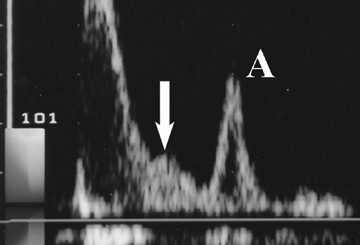Cardiovascular System : Physical Examination -V
Contents
- 1 In which artery character of the pulse is best appreciated –
- 2 What is pulsus mollis?
- 3 In which condition vessels feel rigid even between pulse beats –
- 4 Quickly rising and quickly falling pulse is seen in aortic regurgitation is called –
- 5 Pulse which is characterized by two beats per cardiac cycle where both are systolic waves –
- 6 A2–P2 interval increase in all of the following conditions EXCEPT-
- 7 Paradoxical splitting is seen in all of the following EXCEPT -
- 8 Only right sided sound that decreases in intensity with inspiration –
- 9 All of the following are high-pitched diastolic Sounds EXCEPT –
- 10 Most common cause of a mid-systolic murmur in an adult-
- 11 Which is TRUE regarding Murmur of AORTIC STENOSIS and HOCM in Valsalva maneuver -
- 12 HOCM Murmur intensify in case of all of the following EXCEPT–
- 13 NONEJECTION CLICK is seen in –
- 14 Classic MVP is diagnosed when the mitral valve leaflets are displaced more than --------------------- mm above the mitral annulus high points with more than -----------------mm thickness of the mitral valve leaflets.
In which artery character of the pulse is best appreciated –
ANSWER -A
character of the pulse is best appreciated at the Carotid Artery.
What is pulsus mollis?
ANSWER -B
Low tension pulse - pulsus mollis - the vessel is soft or impalpable between beats.
In which condition vessels feel rigid even between pulse beats –
ANSWER -A
High tension pulse - pulsus durus - vessels feel rigid even between pulse beats.
Quickly rising and quickly falling pulse is seen in aortic regurgitation is called –
ANSWER -C
Quickly rising and quickly falling pulse -pulsus celer - is seen in aortic regurgitation
Pulse which is characterized by two beats per cardiac cycle where both are systolic waves –
ANSWER -A
Dicrotic pulse: is characterized by two beats per cardiac cycle, one systolic and the other diastolic.
Pulsus alternans: - strong pulse followed by a weak pulse over and over again: indicates systolic heart failure
A2–P2 interval increase in all of the following conditions EXCEPT-
ANSWER -C
Pulmonary arterial hypertension - narrowly split or even a singular S2
MR and VSD – A2–P2 interval increase -Premature closure of Aortic Valve
RBBB – A2–P2 interval increase -Delay in Pulmonic Valve Closure
Paradoxical splitting is seen in all of the following EXCEPT -
ANSWER -D
Reversed or paradoxical splitting - pathologic delay in aortic valve closure, such as that which occurs in patients with left bundle branch block, right ventricular pacing, severe AS, HOCM, and acute myocardial ischemia.
Interval narrows with inspiration, the opposite of what would be expected under normal physiologic
conditions.
Only right sided sound that decreases in intensity with inspiration –
ANSWER -C
Pulmonic ejection sound - only right sided sound that decreases in intensity with inspiration.
All of the following are high-pitched diastolic Sounds EXCEPT –
ANSWER -B
TUMOR PLOP - low-pitched sound.
Most common cause of a mid-systolic murmur in an adult-
ANSWER -A
AS is the most common cause of a midsystolic murmur in an adult.
Which is TRUE regarding Murmur of AORTIC STENOSIS and HOCM in Valsalva maneuver -
ANSWER -C
Valsalva maneuver is to distinguish the murmur of aortic stenosis from hypertrophic obstructive cardiomyopathy.
Aortic stenosis will soften or not change
Murmur of HOCM becomes loud with Valsalva.
HOCM Murmur intensify in case of all of the following EXCEPT–
ANSWER -A
Systolic murmur of HOCM - louder during the strain phase of the Valsalva maneuver and
after standing quickly from a squatting position.
HOCM - murmur becomes softer with passive leg raising and when squatting.
NONEJECTION CLICK is seen in –
ANSWER -C
MVP murmur can be distinguished from a hypertrophic cardiomyopathy murmur by the presence of a mid-systolic click which is virtually diagnostic of MVP.
Classic MVP is diagnosed when the mitral valve leaflets are displaced more than --------------------- mm above the mitral annulus high points with more than -----------------mm thickness of the mitral valve leaflets.
ANSWER -B
MVP - mitral valve leaflets are displaced > 2 mm above the mitral annulus high points.
CLASSIC MVP: mitral valve leaflets thickness > 5mm
Non-Classic MVP: mitral valve leaflets thickness > 5 mm





